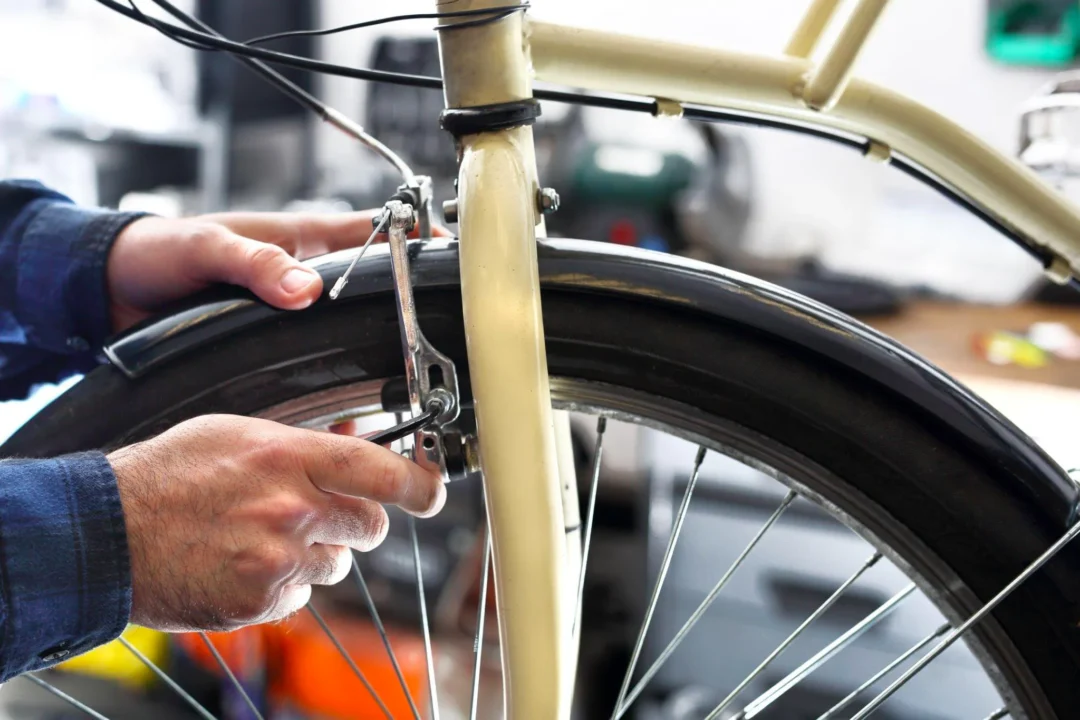
A well-maintained bike is a happy bike, and can save you from being stranded out on the trail with a mechanical issue.
But when it comes to bike maintenance, one question always seems to come up – how often should you get a tune-up or service done on your bicycle?
In my experience, the frequency of bike servicing really depends on a few key factors related to how much and how hard you ride.
For the average cyclist just using their bike casually around town, once a year is probably fine.
But for those of us who are more hardcore about logging miles and pushing our bikes to the limit, more frequent bike servicing is a must.
Below I’ll go through everything you need to know about how often to get your beloved two-wheeled steed into the shop for some professional TLC.
Let’s roll!
For most casual riders, once a year is a good rule of thumb for bike servicing if you’re not riding that much.
But for those of us who are more hardcore, we need more frequent tune-ups and maintenance.
Here are some general guidelines I’d recommend:
The more you ride, the more stress you put on your bike’s components and the faster wear and tear adds up.
Serious cyclists who ride high mileage need to stay on top of maintenance to ensure safety and performance.
As a general rule, you should service your bike at least 2-3 times more frequently than a casual rider.
Mountain bikers should err on the side of more frequent service intervals.
The impacts from riding rugged terrain can take a real toll on your bike.
Every 1-2 months is ideal if you’re a hardcore mountain biker.
If you ride in wet, muddy conditions a lot make sure to clean your bike and check components for wear after every ride.
The added moisture and dirt accelerates wear.
And keep in mind that service intervals are a general guideline.
You still need to monitor your own bike and service it if you notice any issues pop up before your next scheduled tune-up.
The best way is to periodically give your bike a good inspection to spot any potential issues requiring service.
Here are some key things to look out for:
Don’t ignore any issues you find with your inspection.
Getting them addressed quickly saves you from dealing with a total mechanical failure on the trail or road later on!
A full tune-up or service on a bike typically includes:
Some shops may also include replacing brake pads, grips, cables/housings and other consumable parts as needed as part of a full service.
The goal is to get everything adjusted, lubricated and back into proper working order.
It’s a really comprehensive process that takes time but is well worth it to get your bike riding like new again.
Think of it like a full oil change and tune up for your car.
Your ride will feel smoother and you’ll have the peace of mind that everything is safety checked.
For mountain bikers, service frequency should be based on hours ridden rather than miles.
The rough terrain you ride puts more stress on your bike’s components compared to road riding.
Here are some general service interval guidelines based on usage:
The most important thing is to regularly inspect frame, suspension, drivetrain, and components when you clean your bike.
Look and listen for any issues. Don’t wait for a scheduled service if you notice problems.
Address them right away or you risk damaging parts or an accident.
Bike service costs can range quite a bit depending on what all is included:
Shop prices can vary widely based on location and the experience level of mechanics.
High-end shops in major cities charge more compared to smaller local bike shops.
You can save money by learning to do your own basic maintenance and repairs like adjusting brakes/shifters, lubricating, and changing flats.
But most people don’t have the expertise or tools to do major drivetrain and suspension servicing, so leave that to the professionals.
Pro tip: Ask your local shop if they offer service package deals where you pre-pay for several basic services at once at a discounted rate.
It’s a great way to save if you ride a lot.
Staying on top of regular bike maintenance keeps you safe, prevents mechanical issues, and dramatically extends the life of your bike and its components.
For casual riders annually is fine, but as a more serious cyclist I recommend a full service every 3-6 months depending on how much you ride.
Learn to do basic maintenance yourself between professional tune-ups.
And don’t ignore any issues you find with inspection – address problems as soon as possible to avoid damage or dangerous failures.
Implementing a proper bike service schedule will keep you happily riding trouble-free for years to come!
